Early Agricultural Period
ca. 2100 BCE - 50 CE (BCE=BC, CE=AD)
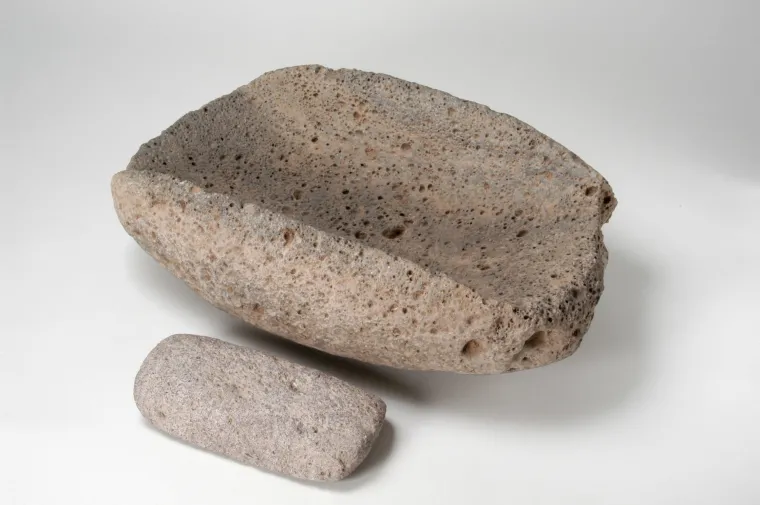
Trough metate with a rectangular mano made of vesicular basalt. This type of grinding stones were used to grind corn into flour. It came into use during the prehistoric ceramic era.
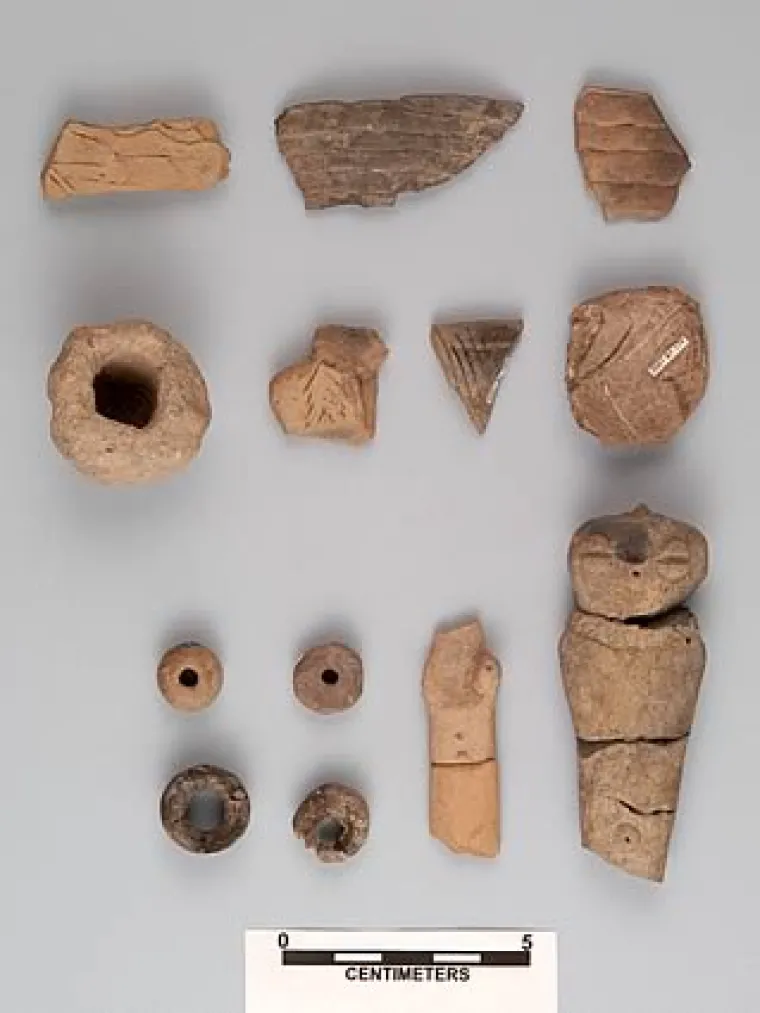
Early Agricultural period fired clay objects.
The latest archaeological evidence suggests agriculture was introduced to the Southwest sometime around 4000 years ago. This coincides with the development of large villages or hamlets that were occupied over an extended period of time. These occupations may have been repeated short-term events, or for longer periods—possibly over one or more seasons and repeated over a number of years. Several of these settlements have been identified in the Tucson area in the Santa Cruz River flood plain. This area provided readily accessible farmlands, although it was also subject to periodic flooding. Houses were relatively small, round- to oval-shaped structures, often with a large central storage pit for corn (maize), and for seeds such as mesquite, cactus fruits, and grasses harvested from the fields and surrounding countryside.
The more sedentary lifestyle reflected in these Late Archaic sites likely facilitated trade in raw materials and exotic goods like obsidian (volcanic glass) for making stone tools, and marine shells for ornaments. The shells were obtained from the Gulf of California and the California coastline, probably through trade with other populations to the south and west.
People also began to make fired clay objects in the form of human figurines and beads. Crude containers formed by pinching clay into small bowls, flattish plates and jars soon joined these other early ceramic forms. By the end of the fourth century CE, many Southwest populations had enthusiastically adopted the new ceramic technologies.
2590 BCE ± 50
Earliest maize found in Arizona
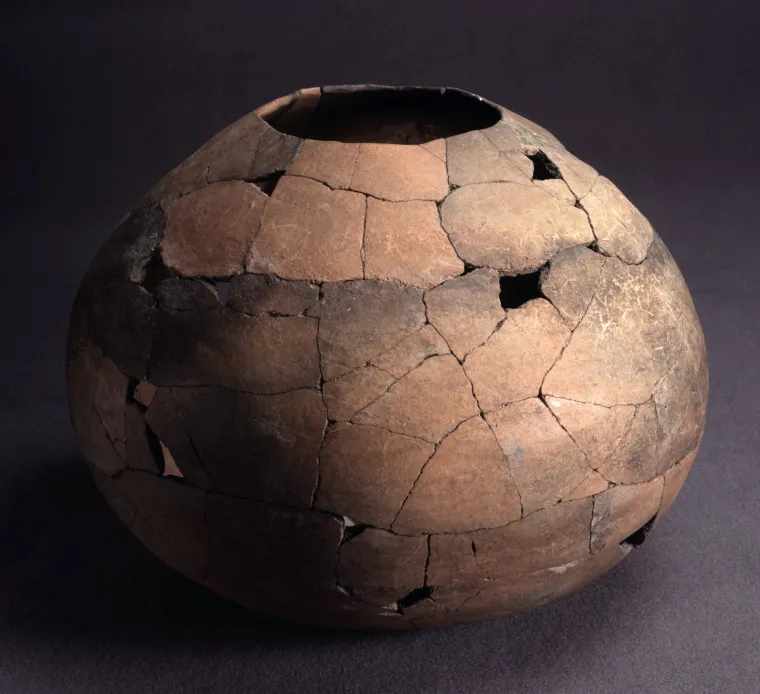
98-136-177
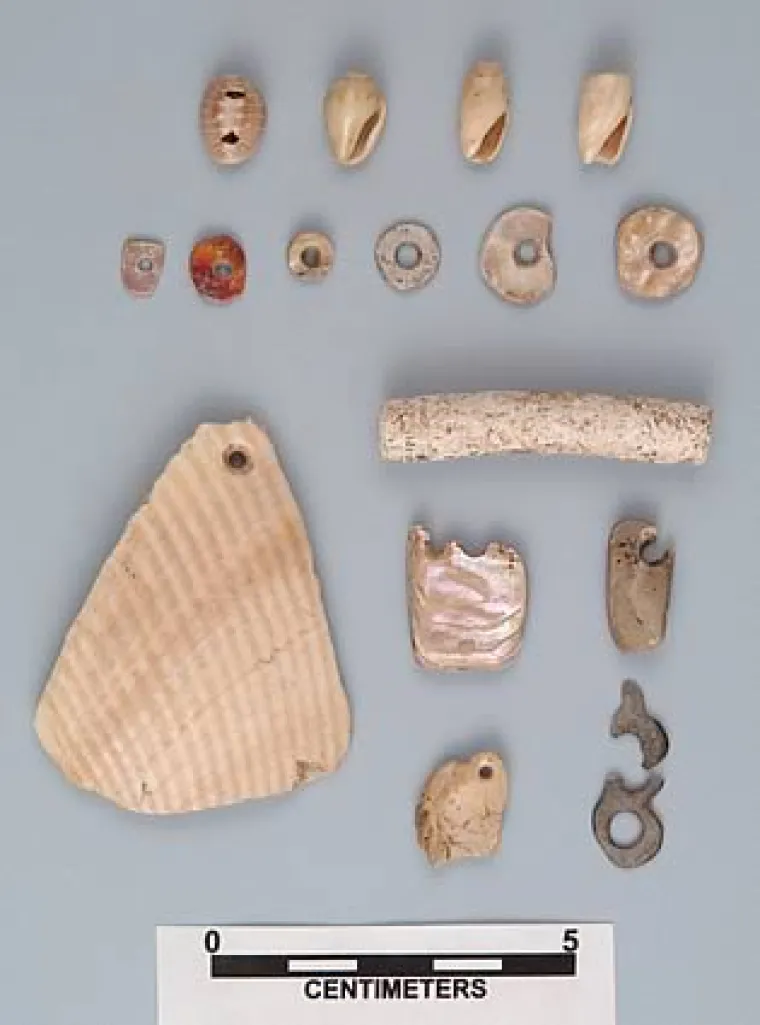
Selected examples of shell beads and pendants from several Early Agricultural period sites including whole shell beads (top row), rectangular and disk beads (second row), a tubular bead made from a sea worm tube, and several geometric pendants.
Plain reddish-brown or gray earthenware vessels with smoothed and lightly polished surfaces were shaped into small jars with rounded bodies and simple openings (sometimes called “seed jars”). The next most common forms were bowls and shallow plates.
In southern Arizona, archaeologists refer to this period as the Early Ceramic Period. A number of other changes also occurred in the technology and lifestyles of these populations. New varieties of corn were introduced, as were new styles of grinding stones to reduce corn to flour more effectively. The latter included the trough metate and rectangular mano.
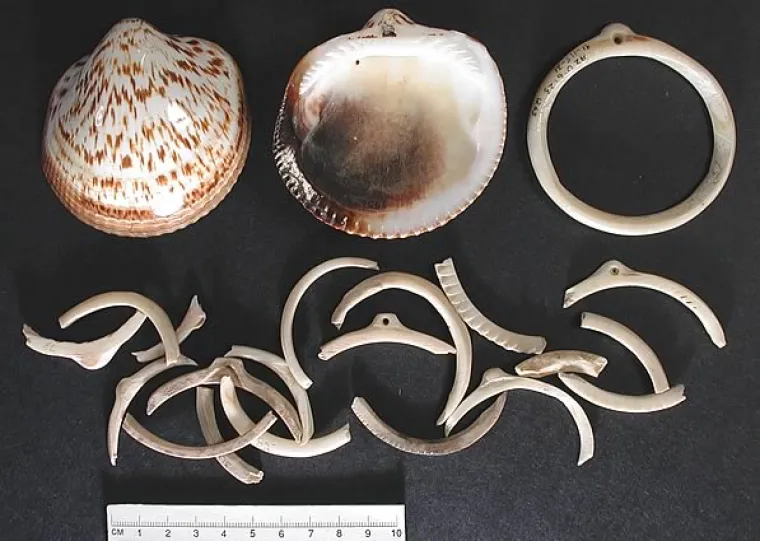
Whole Glycymeris shells and examples of bracelets made from them.
There was also a marked shift in shell ornament styles and bracelets made from Glycymeris, a large bivalve found in the Gulf of California, became increasingly popular at this time.
It did not take long for these people to apply decoration to their pottery. Initial evidence suggests that the earliest experiments involved incising simple designs into the soft clay surfaces prior to firing. Sometime around A.D. 400, they began to apply a coating of fine clay colored with red ochre to the exterior surfaces of vessels. Sometimes these coatings, known as “slips,” also included crushed mica, which produced a glittery surface. Painted designs using ground red ochre soon followed, with broad lined, simple geometric motifs that soon developed into increasingly complex fine lined designs.





